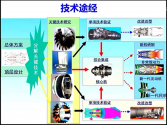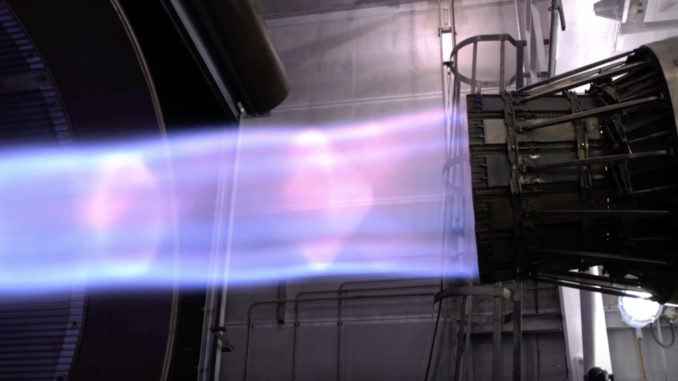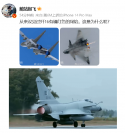The outer petals look similar to WS-10 TVC. Maybe WS-15 uses the same TVC nozzle.
You are using an out of date browser. It may not display this or other websites correctly.
You should upgrade or use an alternative browser.
You should upgrade or use an alternative browser.
Chinese Engine Development
- Thread starter jackbh
- Start date
I’ve been on the fence over the past year about whether the TVC engine on the J-20 was the WS-15 or the WS-10 but it would entirely make sense that the J-10 with TVC was using the same TVC nozzle intended for the J-20 given that the J-10 with TVC is meant to be a test bed for CAC.The outer petals look similar to WS-10 TVC. Maybe WS-15 uses the same TVC nozzle.
I’ve been on the fence over the past year about whether the TVC engine on the J-20 was the WS-15 or the WS-10 but it would entirely make sense that the J-10 with TVC was using the same TVC nozzle intended for the J-20 given that the J-10 with TVC is meant to be a test bed for CAC.
To further the test bed idea. Using existing engines to verify elementary techs for WS-15 is their approach, shown in one of the slides.
- It seems that the fan blades and compressor blades are verified on a WS-10 like engine. The tech is then used on both WS-10 and WS-15. This means that new WS-10 is much improved.
- The engine at the bottom seems to be TVC as well, the photo seems to be not WS-10, but a medium thrust engine. The verified elements seem to be turbine and afterburner or combustor.

Last edited:
I noticed this slide too when I was listening to the talk yesterday. It basically confirms how they've shifted to a components oriented development approach for gas turbines, which by itself isn't that remarkable since it's the basic best practice for mature gas turbine industries, but it does tell you something about the maturity of China's development process. This is no longer the slapdash approach that birthed the WS-10. I suppose existing in an environment with more resources helps tremendously with shifting towards this approach though, because it does require quite a lot more spending and parallel projects to sustain.To further the test bed idea. Using existing engines to verify elementary techs for WS-15 is their approach, shown in one of the slides.
Essentially, WS-15 shares lots of tech with operational engines except the core.
- It seems that the fan blades and compressor blades are verified on a WS-10 like engine. The tech is then used on both WS-10 and WS-15. This means that new WS-10 is much improved.
- The engine at the bottom seems to be TVC as well, the photo seems to be not WS-10, but a medium thrust engine. The verified elements seem to be turbine and afterburner or combustor.
View attachment 103409
To further the test bed idea. Using existing engines to verify elementary techs for WS-15 is their approach, shown in one of the slides.
Essentially, WS-15 shares lots of tech with operational engines except the core.
- It seems that the fan blades and compressor blades are verified on a WS-10 like engine. The tech is then used on both WS-10 and WS-15. This means that new WS-10 is much improved.
- The engine at the bottom seems to be TVC as well, the photo seems to be not WS-10, but a medium thrust engine. The verified elements seem to be turbine and afterburner or combustor.
View attachment 103409
This all certainly makes sense.
It reminds me from the talk a few years back, the talk about the "WS-10IPE" was that it would apply some technologies that were in development for WS-15, the most notable of which at the time was the application of monocrystalline blades which the original WS-10 didn't have and which the original vision of the WS-15 would have been the first to implement.
Given how capable the WS-10C on J-20 appears to be (as well as the ?as of yet unknown new WS-10 variant seen on production J-16/Ds with the new nozzle over the last couple of years), I wouldn't be surprised if they have seen the first benefits of WS-15 R&D applied to some of their subcomponents.
by78
General
An interesting bit of history on the development of thrust vectoring.
An old illustration showing a (长空一号) target drone with a modified WP6 turbjet that features a 2D thrust vectoring nozzle. I believe the drone was meant to verify the thrust vectoring tech without having to retrofit the nozzle onto a manned J-6. I'm not sure if it this ever made if off the drawing board and flew.

A WP6 turbojet with 2D thrust vectoring nozzle:


An old illustration showing a (长空一号) target drone with a modified WP6 turbjet that features a 2D thrust vectoring nozzle. I believe the drone was meant to verify the thrust vectoring tech without having to retrofit the nozzle onto a manned J-6. I'm not sure if it this ever made if off the drawing board and flew.

A WP6 turbojet with 2D thrust vectoring nozzle:


by78
General
The banner in the background reads "(blurred out) 系列发动机强度试验罗阳青年突击队", which roughly translates as "Luo Yang task force for the strength testing of xxx engine". Of course, Mr. Luo Yang (), who passed away on in 2012, was in charge of the J-15 carrier fighter project at SAC.


That's not blurred out. The left end of the banner was deliberately duct-taped to cover up the words.The banner in the background reads "(blurred out) 系列发动机强度试验罗阳青年突击队", which roughly translates as "Luo Yang task force for the strength testing of xxx engine". Of course, Mr. Luo Yang (), who passed away on in 2012, was in charge of the J-15 carrier fighter project at SAC.

Every military jet has different exhaust colors at different power settings due to different fuel/air mixture ratios.View attachment 103587
Ever wondered why ws-10b on J16 and J10c was having different flame-out hue?
PW F-100 of F-15

on test stand


